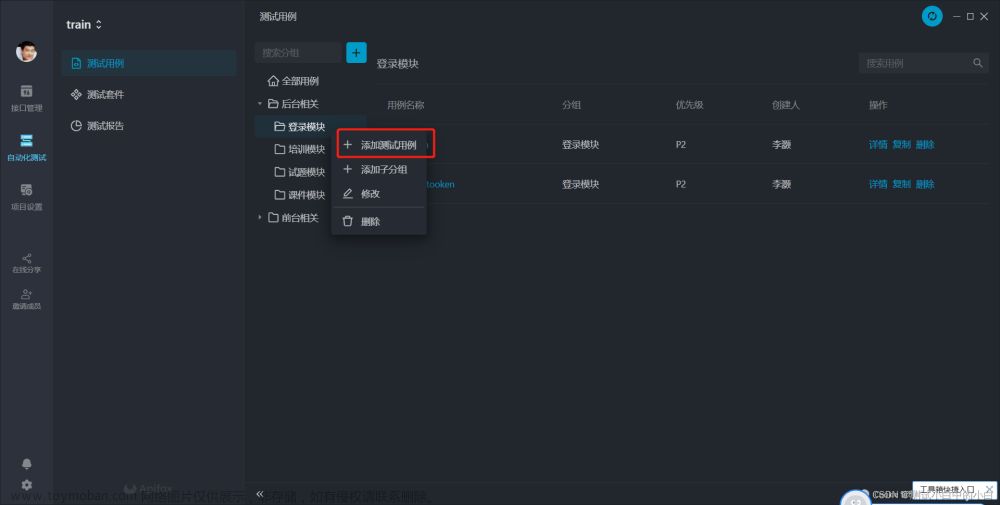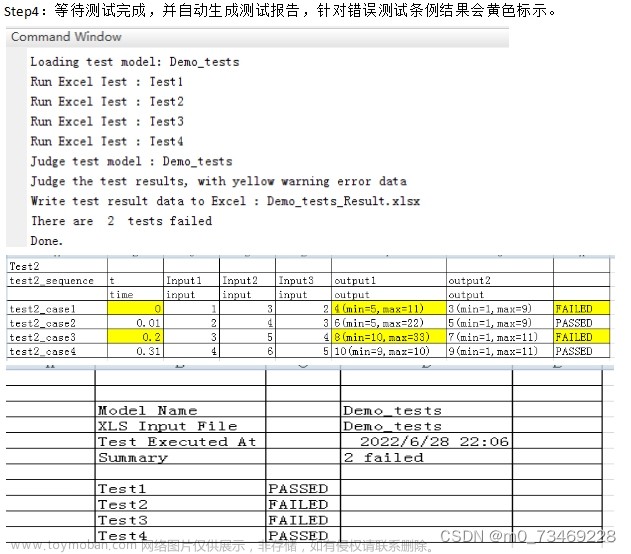自动产生的测试用例本就应该由程序自动执行,这其实也就是NModel推荐的模式。先回过头来看看文章中制作的模型,模型里面将登录、注销、用户名以及密码等要素都抽象出来了,而NModel是以这些抽象出来的动作(登录、注销)和状态(用户名、密码)为依据,产生测试用例的。那么要让NModel自动执行产生的测试用例,那么它需要知道如何才能执行登录和注销这些动作,而且它还需要知道在执行登录操作时,User.Administrator这个抽象出来的用户在实际执行测试用例时,应该采用什么用户名等信息。而这些信息NModel自己是无法“猜测”出来的,需要测试人员的引导才能获得。
因此NModel提供了IStepper这个接口让测试人员提供所需的信息,下面是这个接口的完整定义:
| namespace NModel.Conformance { // Summary: // Must be implemented by an IUT for conformance testing public interface IStepper { // Summary: // Make a step according to the given action, the current state becomes the // target state of this transition. If the action is not enabled an exception // is thrown and the resulting state is undefined. An action on null may be // returned. // // Parameters: // action: CompoundTerm DoAction(CompoundTerm action); // // Summary: // Return to the initial state. If Reset is not enabled in the current state, // an exception is thrown and the resulting state is undefined and is thus not // guaranteed to be the initial state void Reset(); } } |
这个接口的定义非常简单(但是实现起来就是另外一回事了),核心的函数是 DoAction,从名字可以看出,这个函数就是让测试人员自己实现前面模型中每一个动作。而NModel的工作就是将这些动作按照模型定义好的序列组合多个基本的动作。这样多个基本动作的组合就模拟了现实生活中,用户使用产品时的用户场景。在我们这个例子中,要实现的动作就是所有加上[Action]属性的函数,即Login_Start,Logout和WebSiteModel类里面的Initialize。
我们看Initialize和Login_Start动作的实现:
| private void Initialize() { TestSettings = TestLibrary.SetupTest(); } public CompoundTerm DoAction(CompoundTerm action) { switch (action.Name) { case "Initialize": Initialize(); break; case "Login_Start": string userName; modelUserToRealUser.TryGetValue((string) ((CompoundTerm)action.Arguments[0])[0], out userName); string userPass = string.Empty; switch ((string)((CompoundTerm)action.Arguments[1])[0]) { case "Correct": userPass = realUserPassword[userName]; break; case "Incorrect": userPass = wrongPassword; break; } TestSettings.UserHelper.LogOn(userName, userPass); var status = LoginStatus.Success; if (TestSettings.UserHelper.IsLoginFaled()) status = LoginStatus.Failure; break; } return null; } |
这里,我用的是Selenium来实现网站测试用例的自动化, Initialize这个动作很简单,就是在执行所有自动化测试用例之前,做一些初始化操作,在我这个例子当中,就是启动浏览器,将测试用例连接到Selenium-RC上。读者如果不了解Selenium以及网站自动化测试的话,实际上Initialize函数里面的TestLibrary.SetupTest也是从那篇文章里拷贝出来的。
而Login_Start这个函数就有点复杂了,因为在模型里面,Login_Start这个动作要求两个参数,或者说是状态—用户名和密码。而且用户分为Administrator和Authenticated两类,密码也类似。那么在哪个地方将这些抽象的状态具体化呢?当然是在执行测试用例之前,要么是构造函数,要么是前文说到的 Initialize函数。我的例子里面是在构造函数里执行初始化操作:
| public string wrongPassword; public Dictionary<ModelUser, RealUser> modelUserToRealUser; public Dictionary<RealUser, string> realUserPassword; public Site() { modelUserToRealUser = new Dictionary<string, string>(); modelUserToRealUser.Add("Anonymous", TestLibrary.Consts.ContributorUser); modelUserToRealUser.Add("Authenticated", TestLibrary.Consts.ModeratorUser); modelUserToRealUser.Add("Author", TestLibrary.Consts.AuthorUser); modelUserToRealUser.Add("Administrator", TestLibrary.Consts.AdminUserName); realUserPassword = new Dictionary<string, string>(); realUserPassword.Add(TestLibrary.Consts.AdminUserName, TestLibrary.Consts.CommonPassword); realUserPassword.Add(TestLibrary.Consts.AuthorUser, TestLibrary.Consts.CommonPassword); realUserPassword.Add(TestLibrary.Consts.ContributorUser, TestLibrary.Consts.CommonPassword); realUserPassword.Add(TestLibrary.Consts.ModeratorUser, TestLibrary.Consts.CommonPassword); wrongPassword = "abcefghi"; } |
将所有抽象出来的动作和状态具体化以后,就可以让 NModel产生测试用例并根据我们提供的信息自动执行测试用例了,下面这个命令完成这个操作:
Ct.exe /r:TrainStep.dll /r:TrainMode.dll /iut:Train.Test.Site.Create TrainMode.WebSiteModel.CreateLoginModel
Ct.exe用来产生并执行测试用例,为了完成这个工作,ct.exe需要知道模型(TrainModel.dll中的TrainModel.WebSiteModel.CreateLoginModel)和模型的一个实例(TrainStep.dll),但是/iut这个参数是干什么用的?因为一个dll文件当中,你可以有模型的多个实例,或者不同模型的实例,因此,ct.exe需要你明确指定创建模型实例的方法(Train.Test.Site.Create)。文章来源:https://www.toymoban.com/news/detail-698323.html
【整整200集】超超超详细的Python接口自动化测试进阶教程合集,真实模拟企业项目实战文章来源地址https://www.toymoban.com/news/detail-698323.html
到了这里,关于模型生成自动化测试用例的文章就介绍完了。如果您还想了解更多内容,请在右上角搜索TOY模板网以前的文章或继续浏览下面的相关文章,希望大家以后多多支持TOY模板网!












